![]()
![]()
![]()
Use LEFT and RIGHT arrow keys to navigate between flashcards;
Use UP and DOWN arrow keys to flip the card;
H to show hint;
A reads text to speech;
103 Cards in this Set
- Front
- Back
- 3rd side (hint)
|
Ephemeral |
Can have multiple life cycles in a year |
|
|
|
Annual |
Plant completes its entire lifecycle in one year or less |
|
|
|
Biennial |
A flowering plant that takes two years to complete its life cycle. |
|
|
|
Perennial |
Plant that persists for two years or more. |
|
|
|
Masting |
Producing so many fruits/cones that herbaceous eaters can’t consume all of them. |
|
|
|
Monocarpic |
Flowers once, then dies |
|
|
|
Tender annual |
Absolutely no frost resistance |
|
|
|
Half Hardy annual |
Barely withstand frost |
|
|
|
Hardy annual |
Sown outside, will withstand frost |
|
|
|
Winter annual |
Germinates in autumn, lives through winter, produces seeds, dies following season |
|
|
|
Pedicel |
Stalk of a flower |
|
|
|
Receptacle |
Stem tip bearing flower |
|
|
|
Complete flower |
Has all customary flower parts |
|
|
|
Calyx |
Speaks of a flower, enclosed petals and forms protective layer over flower bud. Not always green. |
|
|
|
Sepals |
Each part of the calyx of a flower |
|
|
|
Incomplete flower |
Flowers with one or more of the usual flower parts missing |
|
|
|
Corolla |
the petals of a flower, typically forming a whorl within the sepals and enclosing the reproductive organs |
|
|
|
Perianth |
the outer part of a flower, consisting of the calyx (sepals) and corolla (petals) |
|
|
|
Tepals |
a segment of the outer whorl in a flower that has no differentiation between petals and sepals |
|
|
|
Stamen |
the male fertilizing organ of a flower, typically consisting of a pollen-containing anther and a filament |
|
|
|
Anther |
the part of a stamen that contains the pollen |
|
|
|
Filament |
Slender stalk-like structure that attaches to the base of the flower and supports the anther |
|
|
|
Pistil |
the female organs of a flower, comprising the stigma, style, and ovary. |
|
|
|
Style |
Long slender stalk that connects the stigma and the ovary |
|
|
|
Ovary |
Ultimately becomes the fruit, contains one or more undeveloped seed. Part of the pistil which holds the ovule |
|
|
|
Ovules |
Structure that gives rise to and contains the female reproductive cells |
|
|
|
Flower (botany) |
A shoot modified for reproduction |
|
|
|
Gametes |
Sex or reproductive cell that fuses during sexual reproduction to form a new cell know as a zygote. Sperm (male gamete) egg (female gamete) |
|
|
|
Zygote |
Cell formed when gametes dude during sex |
|
|
|
Actinomorphic |
Radially symmetrical |
|
|
|
Nomenclature |
System of naming used to identify groups of organisms |
|
|
|
Nomenclature |
System of naming used to identify groups of organisms |
|
|
|
How are species names constructed? |
A Latin binomial of a genus name and a specific epithet |
|
|
|
Taxonomy |
the science of organizing and naming things in a systematic way. |
|
|
|
Stem functions |
Structural support for leaves, flowers, fruits - a framework for energy-gathering and reproducing Transport of fluids Storage of nutrients and minerals Production of new tissues at meristems Protection of some processes / tissues from environment (sometimes Herbivory, sometimes energy gathering sometimes vegetative reproduction) |
|
|
|
Root function |
Often, to anchor the plant in a substrate Absorption of water and inorganic (mineral) nutrients Often food storage Sometimes, vegetative reproduction |
|
|
|
Angiosperm |
a plant that has flowers and produces seeds enclosed within a carpel (covered by flesh). The angiosperms are a large group and include herbaceous plants, shrubs, grasses, and most trees |
|
|
|
Bud scale |
A modified leaf that protects the bud |
|
|
|
Caudex |
The persistent and often woody base of a herbaceous perennial |
|
|
|
Caulis |
The main stem of a herbaceous plant |
|
|
|
Cuticle |
The waxy layer on the surface of a stem |
|
|
|
Gymnosperm |
a plant that has seeds unprotected by an ovary or fruit (no seed coating) Gymnosperms include the conifers, cycads, and ginkgo. |
|
|
|
Monocotyledonous (monocot) |
a flowering plant with an embryo that bears a single cotyledon (seed leaf). Monocotyledons constitute the smaller (20%) of the two great divisions of flowering plants, and typically have elongated stalkless leaves with parallel veins (e.g. grasses, lilies, palms) Flower parts in multiples of three |
|
|
|
Dicotyledonous (dicot) |
a flowering plant with an embryo that bears two cotyledons (seed leaves). Dicotyledons constitute the larger of the two great divisions (80%) of flowering plants, and typically have broad, stalked leaves with netlike veins (e.g., daisies, hawthorns, oaks) |
|
|
|
Axillary bud |
a bud located in the axil of a leaf (junction of stem and leaf petiole) |
|
|
|
Bark |
The outermost layers of a woody stem including all the living and non living tissues external to the cambium |
|
|
|
Bole |
Main stem of a tree below the branches (trunk) |
|
|
|
Branchlet |
Small branch |
|
|
|
Bud |
An undeveloped shoot or flower, embryonic shoot |
|
|
|
Bud scale scar |
Scar left on a twig by the bud scales |
|
|
|
Subspecies |
Potentially interbreeding natural population or group of populations differing in some significant morphology (physical) characteristic from the typical form of the species |
|
|
|
Androecium |
Male house |
|
|
|
Androecium |
Male house |
|
|
|
Gynoecium |
Female house |
|
|
|
Epicaylx |
Additional whorl around the calyx of a flower |
|
|
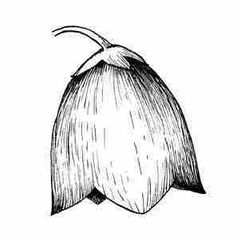
Front (Term) |
Campanulate |
|
|
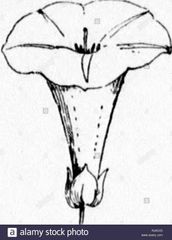
Front (Term) |
Funnel shaped |
|
|
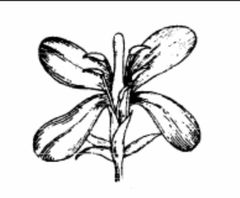
Front (Term) |
Cruciform |
|
|

Front (Term) |
Ligulate |
|
|
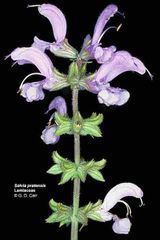
Front (Term) |
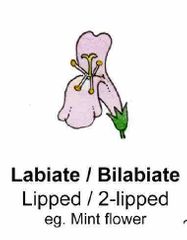
Back (Definition) |
|
|
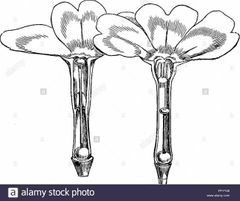
Front (Term) |
Tubular |
|
|
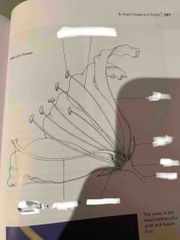
Front (Term) |
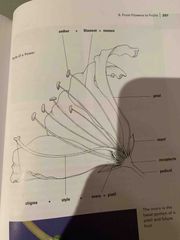
Back (Definition) |
|
|
|
How are plant taxa grouped? |
Evolutionary relationships Life cycle length Woodiness Growth type Conducting tissue Reproductive structures Type of seed Persistence of foliage Type of leaf |
|
|
|
Name the sub disciplines of botany: |
Anatomy Morphology Physiology Taxonomy Ecology Economic Ethnobotany Conservation |
|
|
|
Name the two kinds of flower symmetry |
Irregular (zygomorphic) Radially symmetrical |
|
|
|
Anemorphily |
Wind pollination |
|
|
|
Anemorphily |
Wind pollination |
|
|
|
Hydrophily |
Water pollination |
|
|
|
Melittophily Psychopily Phanaenophily |
Bee pollination Butterfly pollination Moth pollination |
|
|
|
Myophily Sapromyophily Ornithophily |
Fly pollination Fly pollination Bird pollination |
|
|
|
Chiropterophily Cantarophily |
Bat pollination Beetle pollination |
|
|
|
Autogamy |
Self pollination Characteristics - small flowers, usually white. No nectar or scents. Corolla parts often rrsuced or sometimes absent. Anther and stigma close. Staggered pollen release. |
|
|
|
Seed-strain |
Applied to seedlings of cultivated plants that’s have a persistent “Locked in” desirable characteristic |
|
|
|
Horticulture group |
Applied to seedlings of cultivates plants with a shared physical characteristic. |
|
|
|
Forms |
A single minor physical difference that is naturally occurring. Nothing to do with geography |
|
|
|
Gamopetalous |
gamopetalous means a corolla composed of partially or wholly fused petals forming a corolla shaped like a tube or funnel. |
|
|
|
Gamopetalous |
gamopetalous means a corolla composed of partially or wholly fused petals forming a corolla shaped like a tube or funnel. |
|
|
|
Polypetalous |
Having, or consisting of separate petals |
|
|
|
Crown (perennial) |
The persistent base of a herbaceous perennial |
|
|
|
Internode |
The portion of a stem between two nodes |
|
|
|
Internode |
The portion of a stem between two nodes |
|
|
|
Joint |
The section of a a stem from which a leaf or branch arises. |
|
|
|
Meristem |
Undifferentiated, actively dividing tissues at the growing tips of a shoot |
|
|
|
Scape |
A smooth stem without leaves or branches |
|
|
|
Terminal bud |
Bud located at the tip of a stem |
|
|
|
Cladophyll |
A stem with the form and function of a leaf function of a leaf |
|
|
|
Corm |
A short solid verticals stem underground with papery thin leaves |
|
|
|
Culm |
A hollow stock or stem |
|
|
|
Form |
Minor morphological differences not isolated geographically |
|
|
|
Acaulescent |
Without stem |
|
|
|
Ascending |
Growing obliquely upwards |
|
|
|
Caespitose |
Growing in dense tuft |
Growing in dense tufts |
|
|
Cauliflorous |
Bearing flowers on the stem or trunk |
|
|
|
Clambering |
Weakly climbing on other plants or objects |
|
|
|
Decumbent |
Reclining on the ground but with the tip ascending |
|
|
|
Eramous |
With unbranched stems |
|
|
|
Fruticose |
Shrubby or shrub like |
|
|
|
Prostrate |
Lying flat on the ground |
|
|
|
Pulvinate |
Cushion like or mat like |
|
|
|
Ramose |
With many branches, branching |
|
|
|
Recumbent |
Leaning or resting on the ground |
|
|
|
Recumbent |
Leaning or resting on the ground |
|
|
|
Suffrutescent |
Somewhat shrubby, slightly woody at the base |
|

